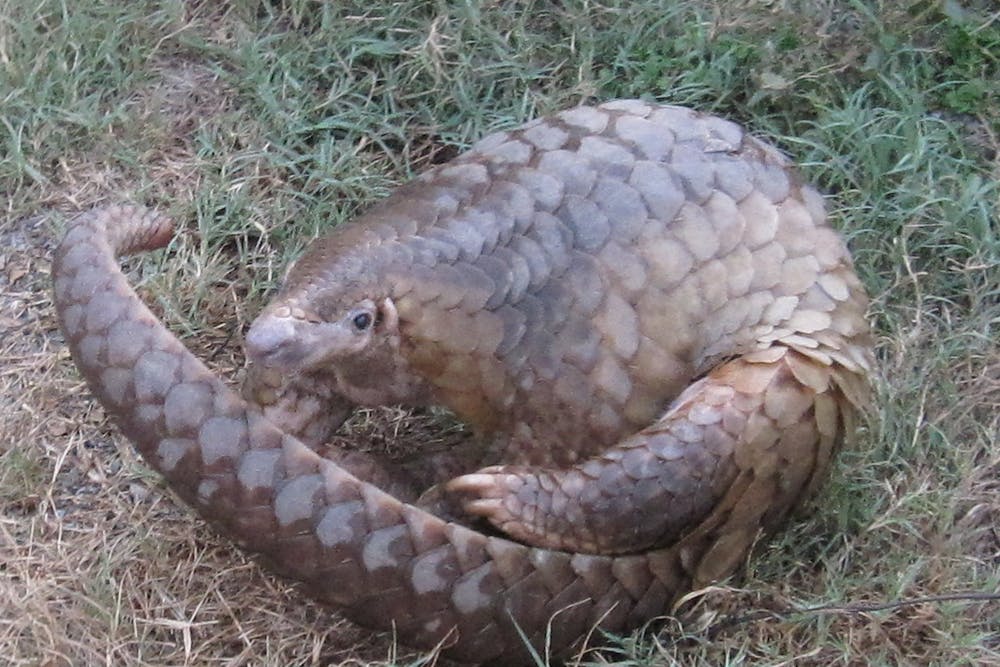As nations across the world grapple with the novel coronavirus (COVID-19) pandemic, conservationists and environmental organizations are calling on policymakers and the public to address the root cause of the pandemic and other outbreaks: the wildlife trade and habitat destruction. Evidence increasingly suggests that increased contact between humans and wild animals is contributing to the emergence of novel communicable illnesses.
The majority of human-emerging infectious diseases are zoonotic, meaning they originate in animals and are passed to humans. COVID-19, the disease caused by the virus SARS-CoV-2, is currently thought to have originated in the Huanan Seafood Wholesale Market, a wet market in Wuhan, Hubei Province in which domesticated and exotic animals alike are sold and slaughtered.
The origins of SARS-CoV-2
Experts agree that bats are the most likely origin of COVID-19’s progenitor and that the virus probably passed through an intermediate host before jumping the species barrier to humans. Although still unclear, recent evidence points to the pangolin, the most commonly trafficked illegal animal, as the intermediate host. In fact, recent genomic comparisons suggest that SARS-CoV-2 is a result of genetic recombination between viruses found in bats and those found in pangolins.
Director of Undergraduate Studies for the Department of Psychological and Brain Sciences Kirsten Bohn was not surprised by news that the likely origin of COVID-19 was bats. Bohn, a bat researcher, cited bats’ ubiquity, long lifespans, unique immunity and gregarious social structures as contributing factors.
She explained that bats have a special type of immunity that humans lack, supporting transmission of the virus.
“[Bats’ unique immunity] creates this population of animals that can carry the virus without getting sick,” Bohn said in an interview with The News-Letter. She noted rabies as one example of a disease that is far less lethal in bats than humans.
She also noted that the communal nature of bats would support transmission within the species.
“Most bat species are highly social, [living] in giant colonies or social groups, so transmission among bats is high as well,” Bohn said.
For Bohn, this combination of factors makes it unsurprising that bats are the reservoir of COVID-19, and other human-infecting diseases such as SARS-CoV and Ebola.
Although it is rare for viruses to jump the species barrier and even rarer for them to then transmit between humans, wet markets such as the one in Wuhan provide an ideal location for such an event to occur.
In addition to the high population density and multitude of species present, animals in such environments are under high stress levels, largely induced by their captivity. Stress can compromise animals’ immune systems, so in such markets, viruses from different species can mix, recombine and spread across species.
Some of the species sold in wet markets such as pangolins and civet cats, the suspected intermediate host of the severe acute respiratory syndrome outbreak (caused by SARS-CoV) of 2002-2003, are in fact illegal.
The wildlife trade
Wet markets are only one component in the illegal wildlife trade, a global black market that draws in $7 billion to $23 billion each year. Wildlife trafficking is the fourth most lucrative illegal trade, in which animals and animal parts may be sold for various purposes, including medicinal use and decor.
In response to the emergence of COVID-19, China declared a permanent ban on wildlife trade and consumption in February. However, the ban does not include wildlife for sale as medicine or pets. It is also important to note that the wildlife trade is not limited to Asia; the U.S.-Mexico border is also a hot sport for the industry, fueled by American demand for reptile skins and exotic pets.
This thriving black market raises concern for conservationists, who worry it will increase the likelihood of zoonotic spillovers. HIV/AIDS is an infamous zoonosis many scientists believe to have originated from the bushmeat trade in Africa.
Habitat destruction and disease
Scientists also fear that habitat destruction could contribute to the emergence of more zoonotic diseases. Bohn noted how increased human contact with wild animals could lead to transmission across species.
“If the wildlife trade continues and the human population is continuously growing [so that] habitat destruction occurs, there is definitely going to be more contact,” Bohn explained. “If you increase the interaction between humans and livestock, then you’re going to increase the likelihood of transmission.”
Such human activities have proven fatal in the past, especially in the tropics, where the overall wildlife and pathogen diversity is higher. Deforestation and agricultural expansion can alter natural habitats and create ideal locations, or anthropized environmental niches, for certain virus-carrying animals.
Clearing patches of forests may create the ideal habitat for the main transmitter of malaria. A study published in Proceedings of the National Academy of Sciences estimated that a 10 percent annual increase in loss of forest cover led to a three percent rise in malaria cases between 2003 and 2015.
The same can be said for bats, as houses and barns provide shelter, lights attract insects they prey upon and orchards and fields provide fruit as food.
In Liberia, deforestation has made way for palm oil plantations, a product in almost all consumer goods. The copious supply of palm fruit attracts forest-dwelling mice, which can pass on Lassa viruses, like Ebola, to humans.
Agricultural-driven deforestation is especially concerning, as it is possible for domesticated animals to serve as an intermediate host between humans and virus-carrying wildlife. For example, it is believed that the dromedary camel passed on Middle Eastern respiratory syndrome, also a type of coronavirus, to humans in 2012.
Concerns over disease “spillback”
Transmission across the species barrier, however, occurs in both directions. Already, COVID-19 has been transmitted from humans to dogs, cats and even tigers. Bat researchers like Bohn are now being advised against conducting field research over concern that they may transmit the now-mutated COVID-19 and create a new reservoir.
Bohn noted that the virus is believed to have originated in the Old World family Rhinolophidae, which diverged millions of years ago from U.S. bats. Because bats can fly long distances, the disease can transmit rapidly among them and potentially “spillback” into humans, complicating disease eradication efforts.
Big picture
Bohn emphasized that neither bats nor people of a specific nationality should be made the villain of the pandemic, but that the outbreak should be situated in the larger context of infectious diseases and global environmental health. Additionally, although COVID-19 originated in China, disease outbreaks have also occurred in the West, like the 2012 West Nile virus outbreak.
Furthermore, the wildlife trade is not limited to Asia, and global demand for products such as beef, soy, palm oil and wood is driving deforestation, especially in the tropics. Looming in the background of all this is climate change, which threatens to increase the range of infectious diseases and is fueled by deforestation.
“Of course, we should think of deforestation and preservation of habitat for our wildlife. I think that’s going to impact human health and the health of the planet,” Bohn said.





